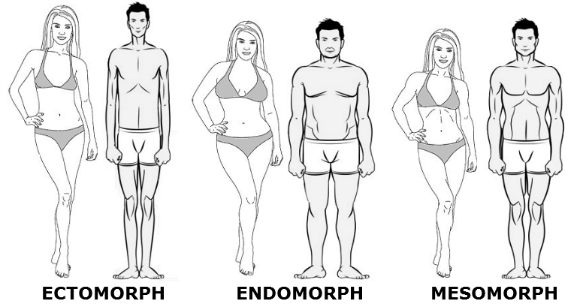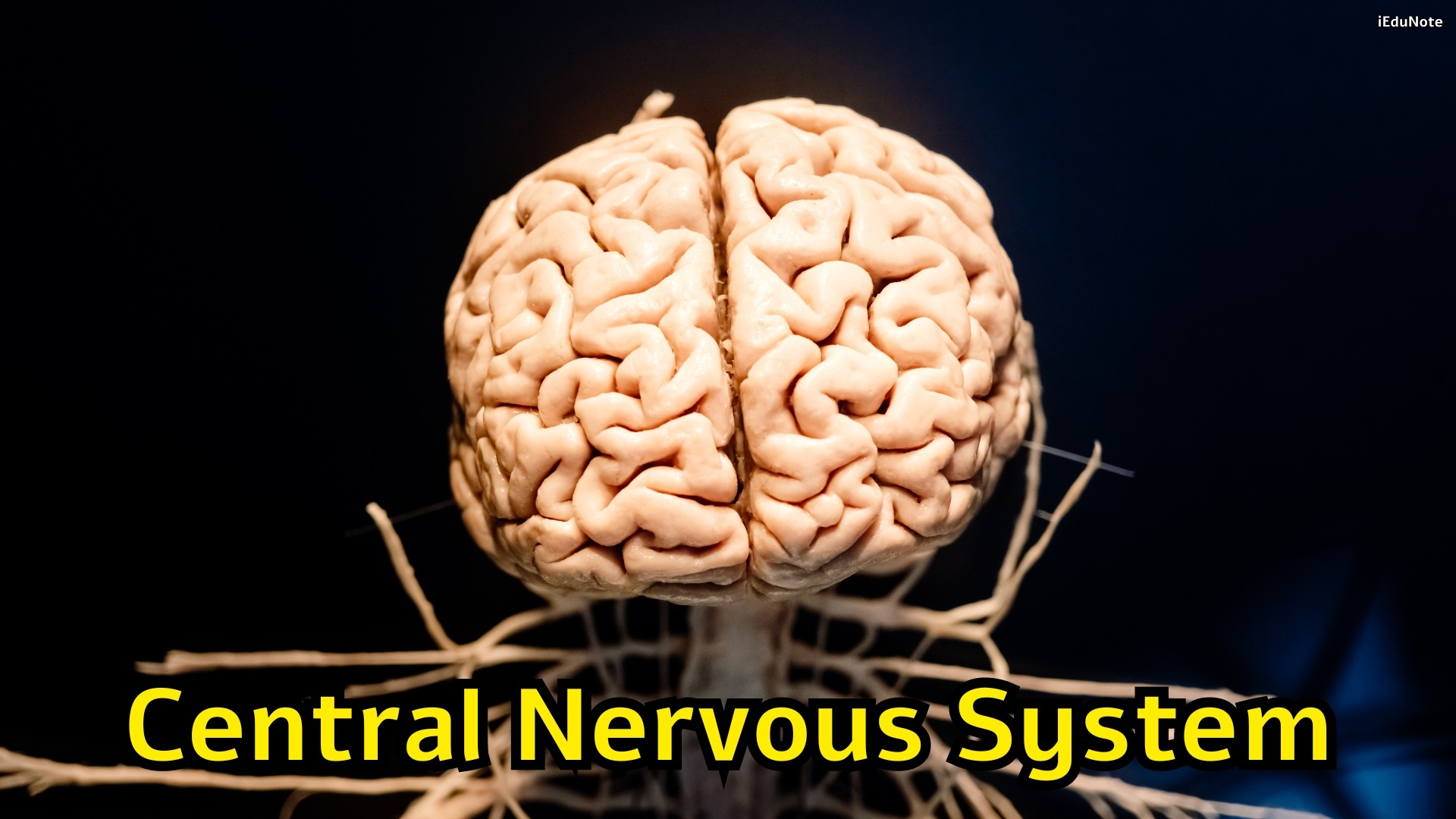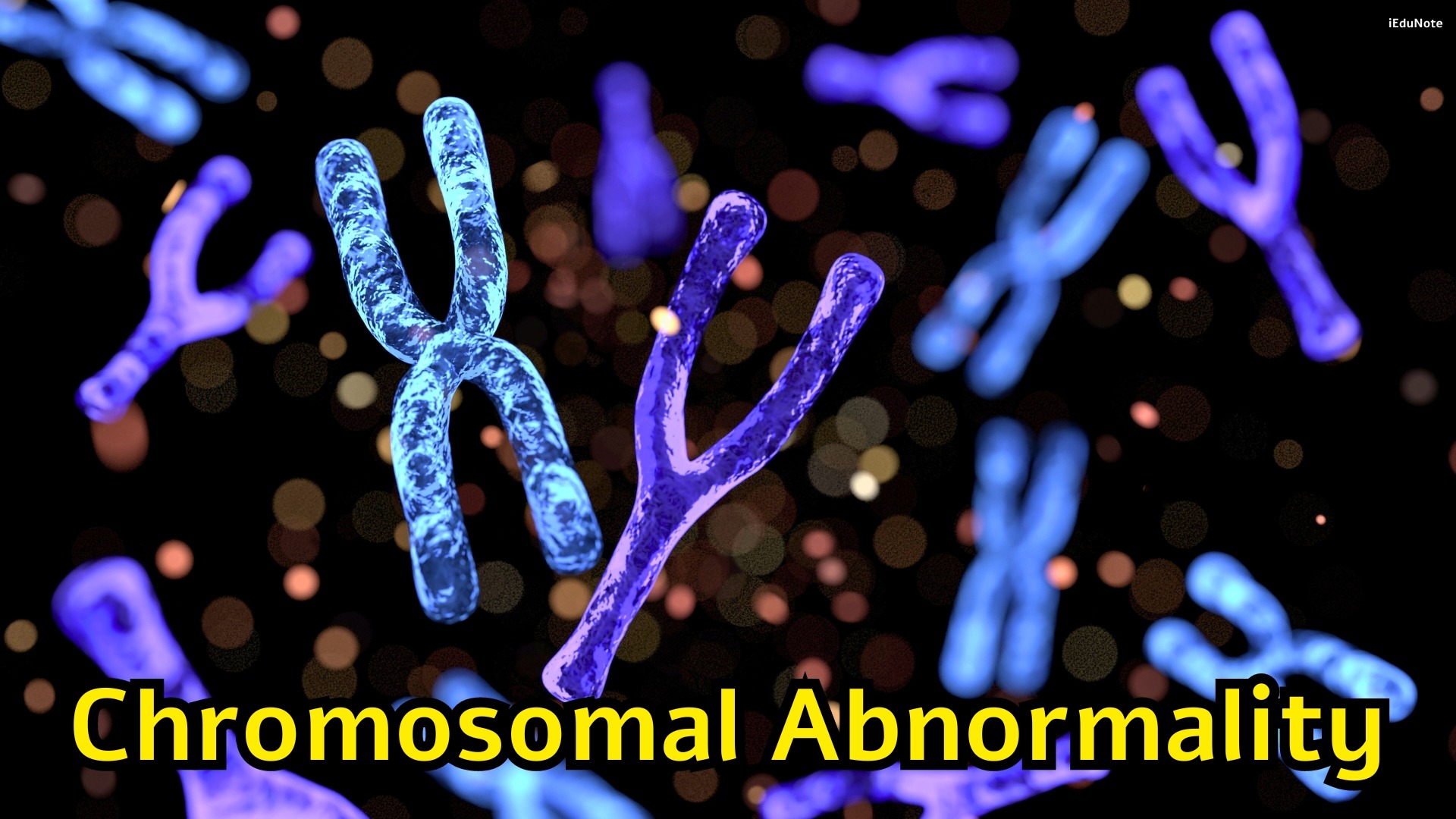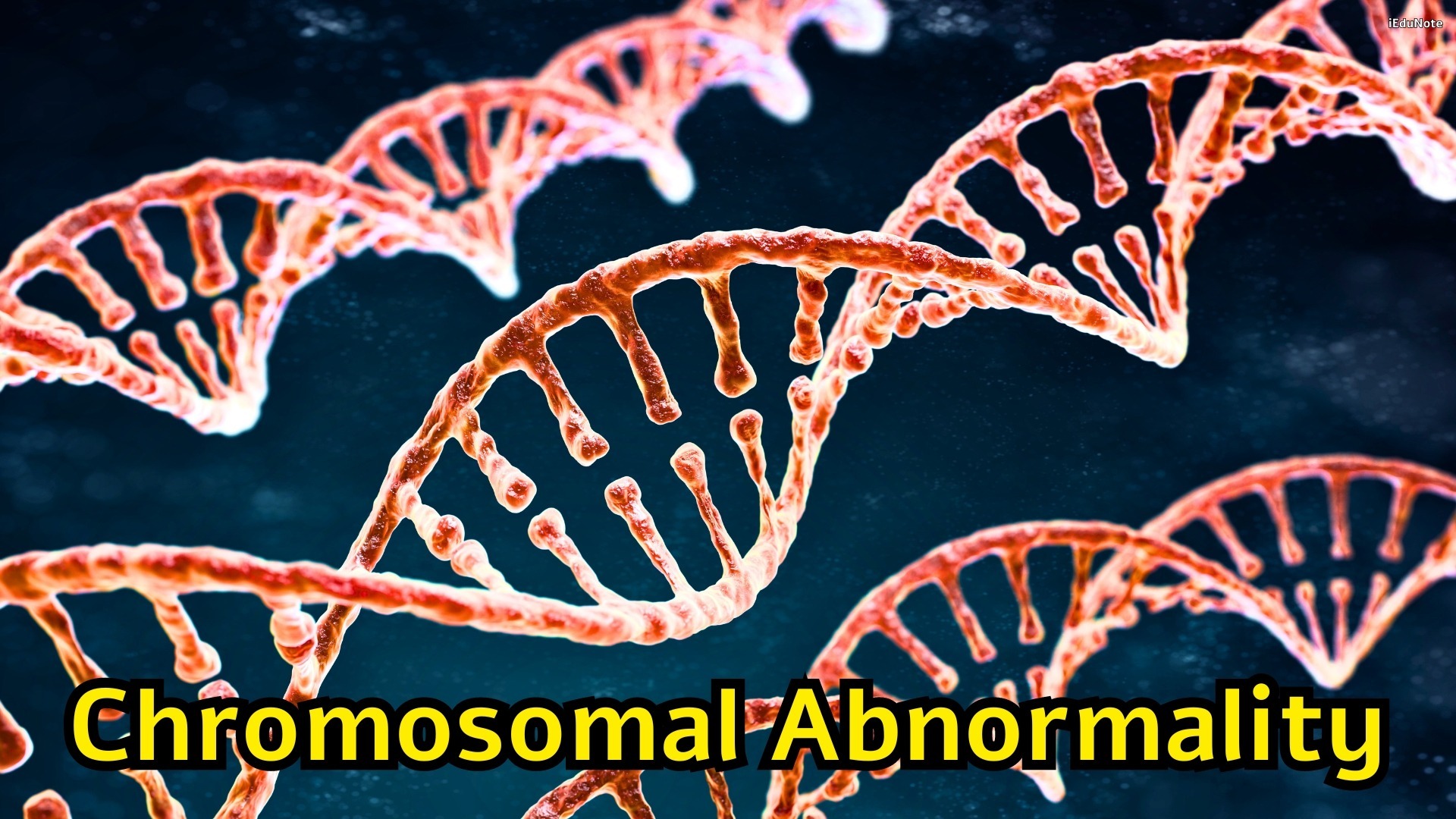Human physiology is very important for every individual. The role of biological factors in determining the external behavior of individuals cannot be overlooked. Many criminological theories try to find out the relationship between biological factors and delinquency.
Early Biological Theories and Gender Differences
Early biological theories started their explanation with the assumption that structure determined function.
The fundamental truth underlying this assumption cannot be overlooked as two major segments of human society, male and female, are different in their biological structures. The sex-determining chromosomes, hormonal operation, and some other physiological rules are different for these two classes.
In most human societies, males have been pictured as aggressive, active, and diverging, and females as gentle, polite, and motherly. Different biological structures may contribute to the different behavior patterns of males and females.
Biological Dispositions and Criminal Behavior
All over the world, around 85 to 90 percent of crimes are being committed by males, indicating a close link between male biological structure and violent behavior. Among males and females, we shall find different biological dispositions.
Some physical structures have been identified as more prone to criminal activities. The truth of different behavior patterns of individuals is claimed to lie in the fact that they are structurally different.
Research Methodology and Theoretical Orientations
Keeping this theoretical orientation in mind, research studies’ logic and methodology followed an easily understood course. All the theories tried to reveal some sort of individual difference with an attempt to correlate those with delinquent behavior.
Due to this preoccupation, measurement and statistical manipulations became an inescapable and necessary part of the research methodology in this whole area of theoretical interpretation.
Evolution from Biological Determinism to Modern Theories
Older scientific approaches in criminological theory advocated for biological determinism. In this approach, criminals were pictured as abnormal, defective, and inferior biologically.
This biological inferiority was thought to produce delinquent behavior on the part of the criminals.
But modern biological theories do not bring biological determinism as a strong argument.
Rather, these theories argue that people having certain biological traits have an increased possibility of engaging themselves in violent and anti-social behavior. It is not an absolute proposition that people with these biological traits will certainly commit crimes, but only an increased probability is argued.
Moreover, many of these theories focus on the interaction between biological characteristics and the social milieu. Certain biological traits may respond differently in different social environments.
12 Biological Factors Influences Criminal Behavior.
Biological Traits: Physiognomy, Phrenology, and Criminal Anthropology

The earliest biological theories tried to establish that physical appearance was the distinguishing mark of the criminals, who were thought to be atavistic in their biological disposition.
The earliest biological theorists tended to picture criminals as biologically abnormal, defective, and inferior. The real cause of criminal activities underlay in these defectiveness. These biological defectiveness and inferiority influenced an individual to commit criminal activities.
From ancient times, criminals were believed to have unusual physical appearance. For example, facial features of Socrates revealed him as brutal, sensuous, and inclined to drunkenness.
Socrates conceded the observation of the physiognomist but said that he overcame all those tendencies through his endeavor. Johan Caspar Lavater (1741-1801), a Swiss theologian, brought out a four-volume work on physiognomy in 1775 which got favorable attention at that time.
Lavater in his work tried to establish a relation between facial features and human conduct. He mentioned beardlessness in men, the bearded woman, a shifty eye, a weak chin, an arrogant nose, and many other facial features as signs of an abnormal individual.
In the course of time, the significance of physiognomy diminished, and it contributed to the emergence of a better-organized and logically more impressive branch of criminological study, namely phrenology.
Phrenology tried to correlate different faculties of mind with the skull and determine human conduct from the exterior features of the skull. This concept emerged from the Aristotelian idea that the brain was the organ of the mind.
The interior shape of the brain was expressed, in the sayings of the phrenologist, through the exterior features of the skull. Different parts of the brain were said to be associated with different faculties or functions of the mind, so the exterior features of the skull revealed the functioning pattern of the mind.
From 1791, the eminent European anatomist Franz Joseph Gall endeavored to establish a relation between head conformations and the external behavior of individuals through his writings.
John Gaspar Spurzheim, a student of Joseph Gall, carried their doctrines to England and America and did their utmost for the acceptance of their ideas.
Gall listed 26 different faculties of the mind; Spurzheim increased the number to 35.
The faculties are;
- amativeness,
- conjugality,
- philoprogenitiveness,
- friendliness,
- combativeness,
- destructiveness,
- acquisitiveness,
- cautiousness,
- self-esteem,
- firmness,
- benevolence,
- constructiveness,
- ideality, and
- imitativeness.
These faculties were stratified into three categories:
- lower or active propensities;
- moral qualities; and
- intellectual faculties.
The lower propensities such as;
- amativeness,
- philoprogenitiveness,
- combativeness,
- acquisitiveness,
- selfish and
- aggressive attitudes were identified responsible for criminal activities.
Moral and intellectual qualities could minimize these lower propensities. The opposite forces operate in a way to keep an equilibrium of human conduct. Crude animal instincts pull an individual to commit a crime, but higher faculties oppose those.
Lower or higher qualities may be strengthened or weakened by continuous exercise. The predominance of higher faculties leads an individual towards a righteous life.
Selfish attitude, combativeness, acquisitiveness, and occupying tendency are responsible for crimes at the individual and family level. A larger version of this reality reveals hundreds of thousands of communal feuds and tribal conflicts.
A more extended form of the picture uncovers bloody wars between nations and barbaric occupation of colonies by mighty empires. The whole of human history has witnessed how animal instincts become a catalyst for persecution, torture, the holocaust, and so many brutal incidents of bloodshed.
Cesare Lombroso, who was educated in medicine and became a specialist in psychiatry, carried the tradition of physiognomy and phrenology further.
Not only the face and skull but the anatomy of all the organs of the human body were brought within his scientific research. He is famous for his physical criminal type theory.
After being influenced by Darwinian findings, he tried to establish that the criminal type resembled lower or more ape-like ancestors, and the stigmata of criminality were the symptom of the savage stage of an individual.
Lombroso was a doctor in the Italian army and had to deal with different problems, including crime of the soldiers coming from Southern Italy. Lombroso made autopsies on sixty-six male criminals and found a conspicuous number of traits that had a resemblance with primitive humans.
He also examined 832 living criminals, both male and female, 390 non-criminal Italian soldiers, and 90 Lunatics. He presented his findings in his famous book, “L’uomo delinquente” (The Criminal Man), which was published in 1876.
Lombroso mentioned many physical features as indicative of criminal, which included;
- deviations in head size and shape,
- asymmetry of the face,
- large jaws and cheekbones,
- unusually large or small ears or ears that stand out from the head,
- fleshy lips,
- abnormal teeth,
- receding chin,
- abundant hair or wrinkles,
- long arms,
- extra fingers or toes, or
- an asymmetry of the brain.
Many of these traits were said to have similarities with some lower animals like monkeys and chimpanzees.
In an examination of 383 Italian criminals, Lombroso found that 21% had only one anomaly in their physique, 43% had five or more anomalies in their bodies.
From the findings he took as many as five in any individual as the minimal indication of physical criminal type. Before making any generalization like physical criminal type, Lombroso should have been more careful and should have verified his findings through a number of researches.
Findings of Lombroso encountered favorable and unfavorable repercussions. Lombroso offered to compare, in response to the criticisms of his theory, 100 ‘born criminals,’ 100 persons with criminal tendencies, and 100 normal persons by an impartial committee study.
If the physiological and psychological traits were found to be similar, Lombroso offered to withdraw his theoretical proposition. This sort of comparison, in the words of Lombroso’s opponents, was impossible, so this challenge was never met.
Charles Goring of England conducted an extensive study which could be considered to some extent as a response to Lombroso’s challenge.
Charles Goring compared convicted and imprisoned persons with a group of normal social individuals including undergraduates of Oxford and Cambridge Universities, hospital patients, the officers and men of units of the British Army.
For the preliminary work of comparison of around 3000 English convicts with large groups of non-criminal Englishmen, the people working under the supervision of Charles Goring worked from 1901 to 1908.
They took another five years for extensive computations and necessary interpretations. In 1913, their work was published under the title “The English Convict: A Statistical Study.”
Lombroso argued that in comparison with normal people, criminals carried anomalies in their head height, head width, degree of receding forehead, head circumference, head symmetry and so on.
After comparing prisoners with the officers and men of the Royal Engineers, Charles Goring found no such anomalies. Goring also compared nasal contours, color of eyes, color of hair, and left-handedness but found differences which were very insignificant.
On the basis of thirty-seven physical traits, he compared groups of different kinds of criminals like burglars, forgers, thieves, and he concluded that there were no significant differences.
When conducting the study, Goring developed his own theory of hereditary inferiority. He concluded that criminals were one to two inches shorter than non-criminals of the same occupational groups and weighed from three to seven pounds less.
Goring interpreted inferiority in stature and in body weight as indicative of hereditary inferiority on the part of criminals.
Goring’s work on physical appearance went more in favor of Lombroso’s proposition than Goring conceded.
But the experts do not approve the proposition that criminals are somehow physically different from non-criminals, and most modern criminologists have accepted the conclusion. Goring wrote:
“Our results nowhere confirm the evidence [of a physical criminal type], nor justify the allegation of criminal anthropologists. They challenge their evidence at almost every point. In fact, both with regard to the measurements and the presence of physical anomalies in criminals, our statistics present a startling conformity with similar statistics of the law-abiding class. Our inevitable conclusion must be that there is no such thing as a physical criminal type.”
E. A Hooton, a Harvard anthropologist, undertook an extensive research on physical type and till that time Goring’s work remained unchallenged. He reviewed Goring’s work and criticized his methodology and conclusions.
Hooton made a comparison of about 14,000 prisoners with more than 3,000 non-criminal people. He concluded that criminals were organically inferior.
When environment impacts on low-grade human organisms, the ultimate consequence is criminal activities. His data revealed that:
- tall thin men tended to be murderers and robbers;
- killing, forgery, and fraud were committed by tall heavy men;
- undersized men were thieves and burglars;
- assault, rape, and other sex crimes were committed by short heavy persons;
- men having mediocre physique floundered around among the crime with no specialty.
Hooton’s work immediately roused critical reaction.
First, without independent evidence of inferiority, conclusions regarding the inferiority of human organisms of criminals should not be drawn.
A second criticism claimed that Hooton obtained but tended to disregard many differences between criminals and non-criminals.
Finally, Hooton argued that physical inferiority was inherited, but he hardly produced any evidence in favor of his findings.
Body Type Theories

Body type theories attempt to establish a high degree of correspondence between an individual’s biological disposition and their temperament, which is expressed through abnormal behavior.
The main advocates of body type theories include Ernst Kretschmer (1926), William Sheldon (1940), and Sheldon and Eleanor Glueck (1950). During the first half of the twentieth century, Ernst Kretschmer, a German psychiatrist, related body structure to behavior, which was also known as the somatotype school of criminology.
He distinguished three principal types of body structures:
- the asthenic type—tall and thin;
- the athletic type—well-developed muscles; and
- the pyknic type—short and fat.
Kretschmer claimed that these physical types were associated with various psychic disorders, such as pyknics being related to manic depression, asthenics and athletics to schizophrenia.
The athletic type had a propensity to commit violent crime, asthenic to petty thievery and fraud, and pyknic to deception and fraud.
William Sheldon expanded on these ideas and put his findings in his famous book “Delinquent Youth.” He began his proposition with a baby in the womb, as every human begins life as an embryo composed of three different tissue layers:
- an inner layer or endoderm;
- a middle layer or mesoderm; and
- an outer layer or ectoderm.
Based on the development of an embryo, Sheldon erected a corresponding physical and mental typology.
The endoderm gives rise to digestive viscera, the mesoderm to bone, muscle, and tendons of the motor organ system, and the ectoderm to connecting tissues of the nervous system, skin, and related appendages.
Sheldon classified human bodies into three major categories: endomorphic, mesomorphic, and ectomorphic physiques. People with endomorphic physiques have relatively great development of digestive viscera, short tapering limbs, small bones, soft, smooth, and velvety skin.
Temperamentally, people with endomorphic physiques are comfortable and extroverted.
Those with mesomorphic structures have relatively prominent muscles, bones, and strong motor organs of the body.
They have a large trunk, heavy chest, large wrists, and hands, and they tend to be assertive, active, dynamic, and exhibit aggressive behavior.
Ectomorphic individuals have lean, fragile, and delicate bodies, small, delicate bones, droopy shoulders, small faces, sharp noses, and fine hair.
They are characteristically introverted and may face various problems like allergies, skin troubles, and chronic fatigue.
Sheldon’s study of 200 young males in a rehabilitation home for boys in Boston found that these youths were predominantly mesomorphic in physical structure and characteristics.
In an earlier study, 200 normal college students showed average characteristics without any predominance in mesomorphic traits.
The Gluecks, S. Glueck and E. Glueck, compared 500 delinquents with 500 non-delinquents. They found that 60.1 percent of the delinquents and 30.7 percent of the non-delinquents had mesomorphic biological structures.
The Gluecks considered that people with mesomorphic structures were more likely to manifest violent and aggressive behavior.
Studies on Twins and Adoptees

Researchers have also explored the cumulative impact of nature (genes) and nurture (environment) on delinquent behavior through studies on twins and adoptees. Twins, both identical (monozygotic) and fraternal (dizygotic), provide valuable insights into the role of genetics and environment.
Identical twins share identical heredity, while fraternal twins do not. Studies on identical twins have shown that there is greater similarity in behavior between identical twins than between fraternal twins.
Researchers like Karl Christiansen and Samoff A. Mednick conducted extensive studies comparing the criminal records of twins. They found that when one identical twin was a criminal, the other twin had a 50 percent chance of being a criminal.
For fraternal twins, this chance was only 20 percent, suggesting a genetic influence on criminal behavior.
A number of scholars made some studies on adoptees to determine whether heredity had any impact on criminal behaviour.
After examining the records of all non-family male adoptions in Copenhagen, Hutchings and Mednick grouped the boys on the basis of who had committed crimes, who had committed minor offences, and who had no criminal records.
They also collected information about the criminal records of their biological fathers. They found that a total of 31.1 percent of the boys who had no criminal record had biological fathers with criminal records.
According to their findings, 48.4 percent of the boys who committed crimes and 37.7 percent of the boys who committed minor offences had their biological fathers with criminal records.
When biological fathers were criminal, as pointed out by the above figures, adopted boys were more likely to be involved in delinquency.
In 1977, Barry Hutchings and Sarnoff Mednick made a study on 662 adopted sons. They compared criminal records of them with those of their biological and adoptive fathers.
In 36 percent of the cases, the sons were criminals when both the biological and adoptive fathers had criminal records; in 22 percent of cases, the sons were criminals when only the biological father was criminal; in 12 percent of cases, the sons were criminals when only the adoptive father was criminal; and when neither of the fathers were criminals, only 10 percent of the sons were an offender.
Whether an adoptee would be convicted or not that was influenced by the number of convictions of his biological parents, not on those of his adoptive parents.
Later, re-analysis of the same data revealed that adoptive and biological parents, socio-economic status, personality problems of the biological parents, and the number of placements before final adoption contributed to the conviction of an adoptee.
These relationships were true for property offences, not for violent crimes.
Between 1972 and 1989, Walters conducted a meta-analysis of 13 adoption studies and found significant evidence of a close relationship between heredity and crime and antisocial behavior.
At last, two limitations of adoption studies should be mentioned.
First, the adoptive parents being engaged in criminal behavior at much lower rates than the normal population made it difficult to generalize the impact of family environment. It also questioned the joint influence of environment and genetics on behavior.
Second, hereditary effects were found to cause petty and property offences, but not more serious and violent offences.
Food Allergies, Diet, and Hypoglycemia

Since 1908, numerous medical reports revealed that various foods have adverse reactions on the human body. After taking those foods, irritability, hyperactivity, seizures, agitation, or other behavioral disorders may occur.
Researchers have been investigating the relationship between food allergies and antisocial behavior.
Researchers have identified various substances in the foods that may result in severe allergic reactions, such as phenylethylamine in chocolate, tyramine in aged cheese and wine, monosodium glutamate used as a flavor enhancer in many foods, and xanthines in caffeine.
Each of these food components may cause behavioral disorders, including criminality.
Jerome, a sixth-grader, was irritable, unhappy, restless, aggressive, and hostile.
He had other physical problems. After the failure of drug treatment and psychotherapy, a nutritionist put Jerome on a diet that contained no food dyes, milk, eggs, corn, cocoa, sugar, or wheat.
Within a day, he felt better, within a week he was sleeping well, his working ability and interaction with friends became better. Jerome became a normal sixth-grader after 6 months.
After 8 months in a lunch Jerome ate one fried-egg sandwich and a large glass of artificial lemonade. Within minutes, he became sick and started to behave aggressively.
There is a relation between the level of sugar and criminality.
Stephen Schoenthaler conducted a series of investigations, under which institutionalized offenders were put on a modified diet that included very little sugar, which resulted in fewer disciplinary actions and a significant drop in aggressive behavior.
This finding was used by some individuals charged with crime as a defense—like Dan White. In 1979, Dan White, a San Francisco supervisor, was charged for murdering his fellow supervisor, Harvey Milk, and Mayor George Moscone.
White argued that when he was depressed, he took high-sugar junk food instead of normal diet that caused his behavior less controllable.
Because of diminished responsibility, White was found guilty of manslaughter, not murder. He served 5 years in prison and after release committed suicide.
His defense was known as “junk-food defense,” “Dan White’s defense,” or the “Twinkie defense.” Later on, many defendants attempted to use this defense, but most of them failed.
Some researchers have identified vitamin deficiencies as the cause of crime.
According to the findings of one such study in one Canadian jurisdiction, 70 percent of criminals charged with serious offenses were found to have deficiencies of vitamin B6. Other studies also identified vitamins B3 and B6 deficiencies in samples of the criminal population.
Some investigators have inquired into how far food additives and food dyes influence behavior. Benjamin Feingold argued that the coloring of food was responsible for 30-60 percent of all hyperactivity in children.
Some researchers have examined the relationship between tryptophan, an amino acid (a protein building block), and criminality. Low levels of tryptophan, a normal component of many foods, are associated with violent behavior.
According to the hypothesis of Anthony R. Mawson and K.W. Jacobs, as corn-based diets are deficient in tryptophan, it may reveal a positive relationship between corn consumption and homicide rates. They collected data of the mean per capita corn intake rates of 53 foreign countries and their homicide rates.
After a cross-national comparison of countries, they found that “countries whose per capita rates of corn consumption were above the median had significantly higher homicide rates than countries whose diets were based on wheat or rice.”
Hypoglycemia is a condition that takes place when the level of sugar in the blood falls below an acceptable range. Hypoglycemia can impair the normal function of the brain, and its symptoms include anxiety, headache, confusion, fatigue, and even aggressive behavior.
The researchers related this biochemical factor to murder, rape, and assault in 1943. Later studies also attributed a higher rate of hypoglycemia to violent and impulsive male offenders.
Matti Virkkunen has conducted a series of studies in Finland. In the 1980s, a glucose tolerance test was administered to 37 habitually violent offenders with antisocial personalities, 31 habitually violent offenders with intermittent explosive disorders, and 20 members of the control group.
After examining the results of the test, Matti concluded that violent offenders had more hypoglycemia than controls.
Neurotransmitters

Neurotransmitters are chemicals that cause the transmission of electrical impulses within the brain. Information in the brain is processed with the aid of neurotransmitters. They are operative behind all types of behavior, including anti-social behavior.
The relationship between neurotransmitters and anti-social behavior has been examined by about 30 studies. According to these studies, the levels of three different neurotransmitters may be associated with antisocial behavior: serotonin, dopamine, and norepinephrine.
After conducting 28 studies on the relationship between neurotransmitter levels and anti-social behavior, Scerbo and Raine concluded that people possessing anti-social behavior have lower levels of serotonin than normal people. Some studies also found the effect of norepinephrine on anti-social behavior.
Genetics initially determine the levels of neurotransmitters, but it can be manipulated by drugs.
The results of the research were though mixed but encouraging as to whether manipulation (by drugs) could reduce anti-social behavior. The change of the environment can influence the levels of neurotransmitters.
Diet change can significantly increase the levels of serotonin, dopamine, and norepinephrine, which could reduce violent or anti-social behavior. Living in a strained situation can lower serotonin levels and increase anti-social tendencies.
Hormonal Interaction and Criminal Behavior

The studies on hormones date back to 1828 when German chemist Friedrich Wohler tried to establish humans as chemical beings. By 1850, the secretions of the endocrine glands (hormones) were found to have some effects on the physiology and psychology of an individual.
Implications of hormonal balance and imbalance became a very important part of human physiology. In the course of time, there had been an attempt to develop a new criminology. Body chemistry and hormonal imbalance became instrumental in this new discourse.
Recent studies relate testosterone or female premenstrual cycles to aggressive or criminal behavior.
The fact that testosterone contributes to the aggressiveness of many animal species is well-documented. Whether testosterone causes human aggressiveness and violent behavior has become a question, and Raine got mixed findings after reviewing some of the relevant literature.
Some studies revealed that high testosterone levels in some people caused increased aggressive behavior, though most of the time their testosterone levels remained normal.
The relationship between testosterone and anti-social behavior may be intervened by social variables. Booth and Osgood found that testosterone might reduce social integration, and reduced social integration caused a higher rate of deviance.
Testosterone is also associated with juvenile delinquency.
Regarding the menstrual cycle, some research examined the role of hormones in the commission of female criminality. Researchers linked biological changes after ovulation with irritability and aggression.
A small percentage of women are vulnerable to cyclical hormone changes that cause increased hostility. Fluctuations in female hormones and a rise in testosterone are linked with thin increase, and some women are very susceptible to this.
The Central Nervous System

Within the brain and spinal cord, there are neurons and systems that constitute the central nervous system of an individual. The cerebral cortex, the outer portion of the brain, consists of two hemispheres divided into four lobes: frontal, temporal, parietal, and occipital.
When studying anti-social behavior, most attention has been paid to the frontal and temporal lobes as they are concerned with destiny-determining behavior, impulses, and emotions.
Neuropsychological behavior emerges if there is any disturbance in the frontal lobe, while the temporal lobe causes emotional expression.
An instrument, electroencephalograph (EEG), was discovered to measure the electrical activity of the brain and could detect abnormalities in brain wave patterns.
According to the results of hundreds of studies, repeat violent offenders have abnormal EEG, but the relationship between psychopathy and EEG indicators is not very certain.
In spite of the relationship between anti-social behavior and EEG abnormalities, Raine clearly points out that we require much more specific information as to how brain wave activity influences external behavior.
Recently, a number of brain imaging techniques are available: these are computerized tomography (CT), magnetic resonance imaging (MRI), positron emission tomography (PET), and single-photon emission tomography (SPECT).
Structural and functional abnormalities in both the frontal and temporal lobes are being detected by these brain-imaging procedures.
After reviewing brain imaging studies, Raine concluded that frontal dysfunction may cause violent offense, and temporal lobe dysfunction may cause sexual offense. Criminals who commit violent and sexual behavior are presumed to be possessed by both frontal and temporal lobe dysfunction.
The Autonomic Nervous System

Apart from the central nervous system, there is the autonomic nervous system (ANS), which is a relatively separate and subtle part of the nervous system and controls many involuntary functions of the body, such as blood pressure, heart and intestinal activity, and hormone levels.
By increasing the heart rate, rerouting the blood from the stomach to the muscles, dilating the pupils, increasing the respiratory rate, and stimulating the sweat glands, when the ANS prepares the body for maximum efficiency, it is active in a “fight or flight” situation.
A lie detector is being used to measure these functions and utilize them to determine whether people are telling the truth.
The philosophy underlying this theory is that people anticipate punishment or feel uneasy when telling a lie.
This uncomfortable feeling or anticipation of punishment will be reflected by abnormal changes in heart rate, pulse, and breathing rate and in the electric conductivity of the skin as sweat conducts electricity.
Some researchers describe the anxiety reaction of childrn in anticipation of an unwelcome situation as the primary machinery for the socialization of them. The children are taught by their parents not to do such kinds of activities that can bring punishment for them.
This type of teaching causes the development of conscience and guilty feelings in children, and accordingly, they try to avoid unwelcome situations.
The anxiety reaction for future punishment is closely linked with autonomic nervous system function and determines, to a certain extent, the socialization of children. If the “fight or flight” response of a child is very slow in a situation when punishment may be a possible consequence, then the socialization of that child may be jeopardized.
The time between when the skin conducts the most electrical current and when that conductance returns to normal levels is called the skin conductance response (SCR) recovery.
Mednick suggested that the rate of skin conductance response (SCR) recovery can be taken to weigh the general rate of recovery in the autonomic nervous system.
After a threatening situation, at what rate fear is reduced, that can be measured by SCR recovery. Mednick very correctly pointed out that the reduction of fear is very crucial for regaining the normalcy of psychological condition.
The results of research on the autonomic nervous system are mixed, but the researchers reveal a general picture which suggests that people possessing anti-social traits have lower levels of skin conductance and lower heart rates when they are in resting situations.
From these physiological measures, we may get some possible indication that antisocial people have lower levels of ANS functioning.
All the studies relating to ANS functioning brought some evidence that ANS functioning may have some relation to criminal behavior, but to draw any firm conclusion is quite difficult.
Drugs and Crime

In recent years, special attention has been given to finding out the relationship between substance abuse, including alcohol and other drugs, and criminal behavior.
Studies reveal that most of the people who are arrested, convicted, and incarcerated have abused alcohol and other drugs. Studies of alcohol abuse suggest that there is a relationship between substance abuse and crime.
According to the report of the National Council on Alcoholism of the US, alcohol misuse may be responsible for 64 percent of murders, 41 percent of assaults, 34 percent of rapes, 29 percent of other sex crimes, 30 percent of suicides, 56 percent of fights or assaults in the home, and 60 percent of child abuses.
The effect of alcoholism on society is massive, as alcoholics commit crimes, cause accidents, and create various social problems. Alcohol abuse is said to have caused approximately 40 percent of industrial fatalities and 47 percent of industrial injuries.
The intelligence quotient (IQ) of unborn babies becomes lower if pregnant women consume excessive alcohol and drugs.
Among American teens, substance abuse is a major problem. A 1993 study reveals that 66 percent of teens use alcohol and other illegal drugs.
Around one-third of the teens who commit serious crimes consume alcohol before their commission. Among the teens who committed suicides, over 70 percent of them used different drugs frequently.
In one-half of the reported campus rapes, 75 percent of the fatal accidents, and almost 40 percent of drownings, the concerned teen took alcohol before the incident.
The reality of the occurrence of violence and substance abuse does not mean that abuse causes crime; rather biological, psychological, or sociological factors are responsible for criminal behavior.
Although there is no conclusive evidence to substantiate the cause-and-effect relationship between substance abuse and crime, but the presence of the possible effect of substance abuse in so many crimes cannot be overlooked.
Lana Harrison and Joseph Gfroerer very correctly commented that:
“There is no firm evidence of a causal relationship between drug use and crime. The general conclusion reached by a number of researchers is that deviant behaviors such as drug use and criminal offenses occur within the context of a general deviance syndrome. Those likely to engage in one form of deviant behavior (that is, crime) are also likely to engage in other forms of deviant behavior (that is, drug use).”
Substance abuse causes immeasurable economic costs to individuals and society. American businesses cost billions of dollars every year because of absenteeism, additional health benefits, and faulty goods produced by workers under the influence of alcohol. The abuse also creates various social problems.
Fetal Abuse

Recently, attention has been given to the effect of alcohol and other drugs taken by pregnant women on their fetuses. Many of the babies born to the mothers who ingested cocaine are premature and have serious physical problems
In the United States, every year over 50 thousand babies are born with alcohol-related problems. About one-fourth of them are classified as fetal alcohol syndrome (FAS) babies because of their having severe injuries and damages. FAS causes facial and head deformities and mental problems in children.
If parents are exposed to alcohol, the possible consequences are damages to the fetus’s central nervous system, decreased intelligence, hyperactivity, slow reaction time, and lower attention scores.
Characteristically, FAS children are more likely to become stubborn and uncooperative. Conduct disorder children commit truancy, shoplifting, and use drugs and alcohol.
Smoking cigarettes during pregnancy causes 5,600 deaths and 115,500 miscarriages a year. Every year, female smokers give birth to 53,000 low birth-weight babies, including 22,000 who require the service of an intensive care unit at their birth.
Some evidence suggests that birth defects may be caused by males who use drugs, especially cocaine, before their sperm fertilizes an egg.
The above findings confirm that many males and females ingest illegal drugs prior to conception or during pregnancy.
- Should they be prevented from harming their offspring?
- If the existing statutes are not sufficient, should new statutes be enacted?
- Should alcoholics and smokers be punished, as they are not violating the law?
- All these issues require judicious consideration by society.
Chromosomal Abnormality

Chromosomes are the basic structures that contain our genes. Each individual gets 23 pairs of chromosomes from their parents; one pair determines gender. A female gets an X chromosome from her mother, and another X from her father; a male receives an X from his mother and Y from his father.
Each ovum or sperm bears 23 chromosomes at conception and joins together to form a single cell. It will then develop into the embryo. Sometimes an abnormal cell division takes place before conception, and the sperm or ovum contains more than one sex chromosome.
The resulting embryo will then get an extra sex chromosome. XXY individuals, known as Klinefelter’s syndrome, were the first to be identified as having sex chromosome abnormalities, which are claimed to be related to degeneration of the testes, sterility, breast enlargement, moderate mental retardation, alcoholism, and homosexuality.
It is to be mentioned that the findings related to Klinefelter’s syndrome are widely disputed.
Sometimes, because of the defect in the production of sperm or egg, some males get an extra Y chromosome, which abnormality is designated as the XYY syndrome.
Approximately 1 out of 1000 newborn males takes birth with this genetic composition. Patricia Jacobs was the first to investigate whether XYY males have any tendency toward aggressive behavior.
She did it in a maximum security mental hospital in Scotland. In the subnormal wing of the hospital, she found 12 out of 196 men had chromosomal abnormalities, including 7 with XYY abnormality, who were exceptionally tall.
Jacobs and her colleagues described XYY males as dangerous and violent. It was substantiated by the fact that some violent crimes were committed by males who were later found to have XYY abnormality.
But further investigations revealed that XYY inmates were considerably less violent than other inmates. Researchers in some studies concluded that XYY males were not predictably aggressive.
No researcher conclusively tells that males having XYY abnormality will be criminals; rather an increased risk of developing an anti-social personality has been argued.
The XYY abnormality drew much public attention because of the case of Richard Speck. In 1966 Speck killed 8 nurses in Chicago. He was initially diagnosed as having XYY syndrome, but later diagnosis proved it wrong
Nevertheless, the question was frequently asked: Were all XYY males potential murderers?
Since that time investigations were undertaken to examine the relation between XYY abnormality and criminality, but researchers did not find any convincing evidence.
Nevertheless, there is the possibility that violent behavior may be partly determined by genetic factors. But it is difficult to investigate the possibility.
One major problem is to separate genetic predispositions from environmental factors, which include family, culture, socioeconomic status, and peer influences.
An individual may have a genetic predisposition to aggressive behavior, but as he was born and brought up in a good family environment, and got education and ethical lessons, he may never commit a delinquent act. Another person may possess a genetic predisposition to a law-abiding and gentle life.
But because of a bad family atmosphere and poor education, he may commit a crime. It is very difficult, then, to determine to what extent behavior is influenced by genetics?
DNA Test and Identification of Criminals

More than 100 countries are now using DNA technology for fast, accurate, and reliable investigations of criminal cases. Particularly in murder, rape, paternity determination, and immigration dispute cases, DNA technology is extensively used.
Suspected criminals can successfully be identified by an analysis of a DNA sample collected from the crime scene. Deoxyribonucleic acid (DNA) is found in the nucleus of human cells.
A DNA sample can be collected from evidence left in the crime scene, such as saliva, hair, blood, semen, sweat, hat, collar of a shirt, handle of spectacles, hockey stick, toothpick, stamp, envelope, bottle, can, used condom, pillow, blanket, and bed-sheet.
DNA technology was first used in the UK in 1987. Alec Jeffreys, a British scientist, discovered the technology. In every human body, 99% of total DNA is similar; only 1 percent is different. At the intronic region of the genome, this 1 percent non-functional DNA is found in abundance.
DNA analysis is done by Micro Satellite Sequence (MSS). DNA consists of four types of bases, the variation of which helps in identifying individual differences. Sample registered in a police case is analyzed in the laboratory.
The report of DNA analysis is provided to police, judges, and lawyers who can use it for detecting delinquents. DNA samples are preserved in the archive, so there is hardly any scope to manipulate it, which could be re-checked if anyone challenges.
It is possible to give a DNA-analysis report within 24 hours, but usually, seven days’ time is taken, which is an international standard. “DNA samples from a crime scene can be degraded due to moisture and other reasons, but in modern technology, it is possible to generate DNA profiles. Extracted DNA from a crime scene is amplified through polymerized chain reactions to increase the quantity of DNA content.”
Police judges and lawyers are trained to utilize DNA profiles to enable them to investigate criminal proceedings.